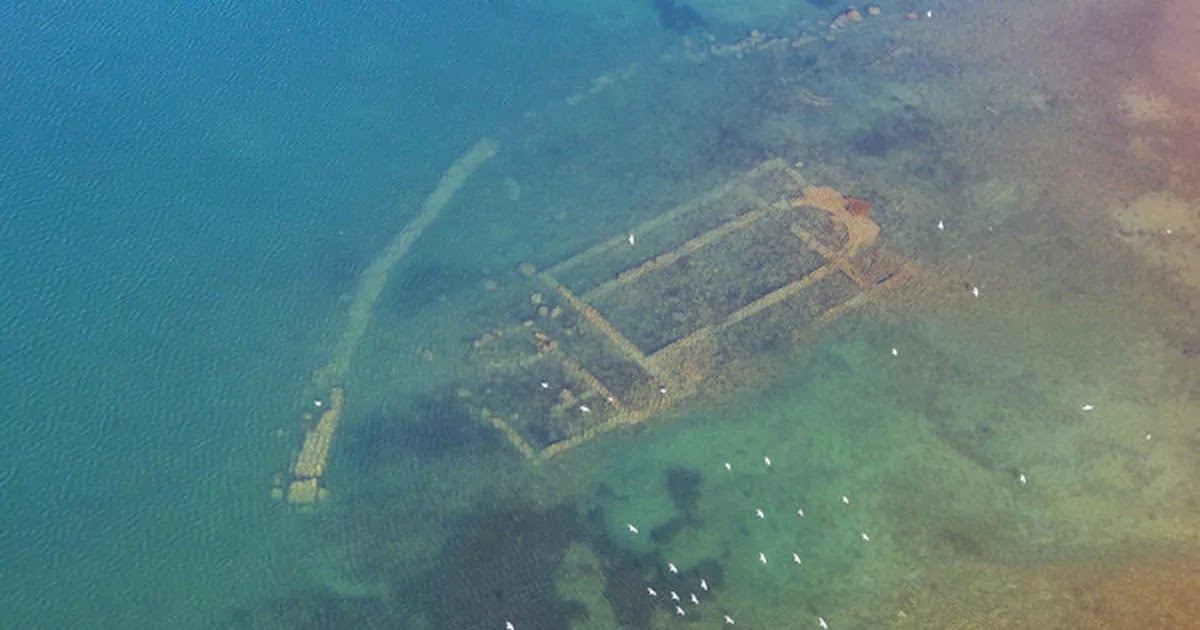
Photo: St. Neophytos Basilica under Lake Iznik in Turkey. Credit: Arkeofili/vici.org/public domain
A fall in water level at Lake Iznik in Turkey has unveiled the ruins of a 1,500-year-old basilica, leading to excitement and intrigue from archaeologists and historians.
The lake in northwest Turkey has seen its water level fall over recent years and, in 2014, as aerial photographs were taken of the lake, the startling realisation was made that a monastery was sitting underwater just 20 metres from the shore. As the water level has continued to decrease the investigation into the ancient ruin has now become a more practical task.
Hidden for centuries, the building was constructed by the Christian Byzantine Empire who at that time ruled over much of what is now Turkey. The Empire crumbled and was eventually taken over by Ottomans who imposed Islamic rule over the area.
The church is believed to be dedicated to St. Neophytos, a saint who was martyred in France after he was killed for disobeying pagans. His remains were moved to this location and a church was built on top of it. It is therefore likely the case that St. Neophytos’ skeleton still lies beneath the submerged construction. It was common practice at the time to build churches upon the graves of martyrs and saints.
Submerged 1,500 year-old basilica of St. Neophytos resurfaces with retreat of Lake Iznik in NW Turkey. https://t.co/dw5vd9M7tc #RomanMiddleEast #RomanArchaeology #Archaeology pic.twitter.com/vqPiZ9WG2I
— Roman Middle East (@RomanMiddleEast) September 20, 2020
The area itself was once part of Nicaea, a city where the Nicene Creed was created by the First Ecumenical Council, an important statement in Christian liturgy. The city then went on to play an important part in the development of Eastern Christianity. Showing just how important this new discovery really is. It is even believed by some that the monastery, and much of the rest of the city, was sunk as the result of an earthquake in the year 740. It may very well be the case that far more discoveries are now lying before the water’s surface.
This is just one among a number of important archaeological discoveries of Byzantine culture found in modern day Turkey.













COMMENTS